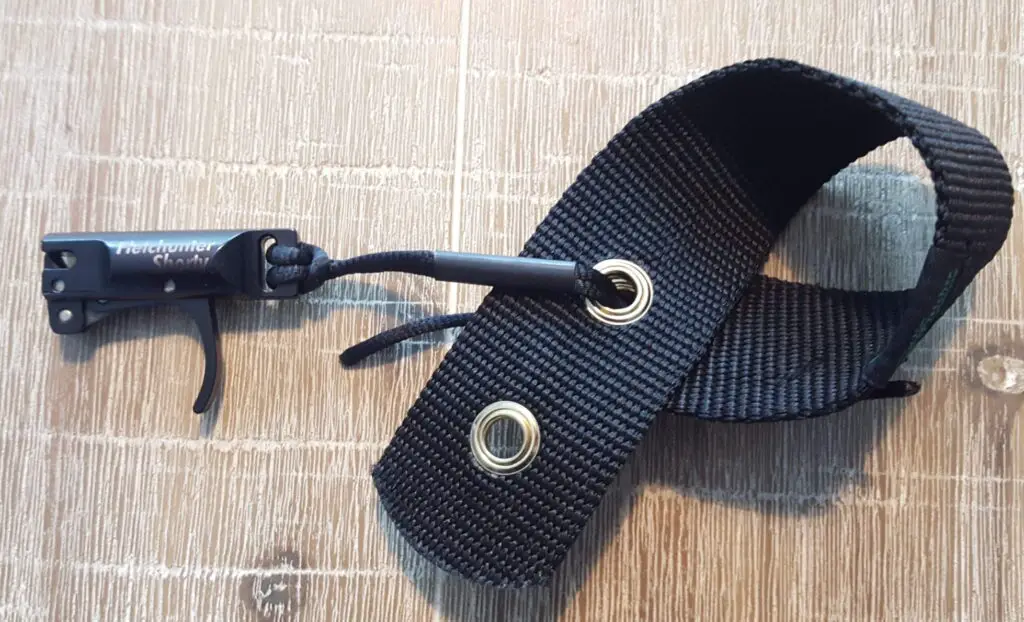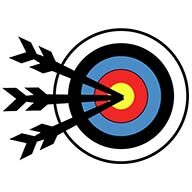One of the most important pieces of a compound archer’s kit is the release aid. The release aid simplifies the release process and prevents sloppy releases. Therefore choosing the right release aid can make your life as an archer much easier, but therefore you need information on what features a release aid provides. There are so many different releases that it can be hard to distinguish them.
In this article, I will first give an overview of the different releases available on the market with their pros and cons. Next, I will explain why target archers use a thumb release and hunters a wrist release. At the end of this article, I will discuss two products that I tested and recommend.
Summary
There are many different types of releases, but the most popular are the caliper wrist release and the handheld thumb release. For beginners, these releases are recommended because it’s easy to get used to and there are many options available. It’s recommended for a beginning archer to start with an inexpensive release because most archers switch within 2 years.
The different types of releases
Many different releases have been developed over the years. These releases differ mainly in two important aspects: the trigger mechanism and the grip. In this section, I will discuss each release in more detail.
Caliper wrist release
The caliper wrist release is one of the most popular release types. This release is popular because it’s simple and easy to use. Because this release type is so common there are many expensive, but also very cheap options available. This release attaches to your wrist with a wrist strap, therefore you don’t have to grasp the release when drawing the bow.

The name ‘’caliper’’ refers to the mouth of the release mechanism. With this release both parts of the mouth open when you pull the trigger. You pull the trigger with your index finger to fire the shot After you pull the trigger the mouth closes automatically by the tension of an internal spring. Therefore you have to pull the trigger when you want to attach the release to the D-loop.
Caliper handheld release
There is also a handheld version of the caliper release. This version is quite uncommon because the ergonomics are a bit weird, which makes anchoring more difficult. There are even a few handheld caliper releases that are activated with the thumb instead of the index finger, but these are very rare.

Thumb wrist release
The biggest and most important difference between the caliper wrist release and the thumb wrist release is the release mechanism. As the name suggests, this release is activated with the thumb. This release also has no mouth where the top and bottom both open. This release has one jaw that keeps the D-loop retained.
Thumb wrist releases look often quite similar to caliper wrist releases. They both have a wrist strap, a release housing and a rope or rod that connects the two together. Thumb releases however are often have a shorter rope or rod, because the length between the thumb and wrist is smaller than the length between the thumb and index finger. Thumb releases also often have a larger trigger to accommodate the thumb.
There are also thumb and caliper releases that have an adjustable rope, which makes you able to use it both with your index finger as your thumb.

Handheld Thumb release
Although the thumb handheld release has a similar mechanism to the wrist release, they look very different. This is because you grip the release with your index, middle, and ring finger. And anchor upside-down behind your jaw. This release is very common and there are a wide variety of options available.
There are also handheld releases that have a wrist strap. This wrist strap is only used to pull the bow through the let off. When the bow is pulled through the let off the archer grabs release with their three fingers and uses it as a standard thumb release. Compound archers that have no wrist strap sometimes add a thin cord to the release, which is slung around the wrist, to prevent it from dropping on the ground after the shot is fired.
Just like the wrist release, the thumb release also has caliper versions. The grip of these releases is the same, only the mechanism of the release is the same as the standard caliper versions.


Back tension/ hinge release
A back tension or hinge release is often used by experienced target archers. This release is not suitable for experienced archers because it has an unusual firing mechanism that isn’t forgiving in terms of technique. If you manipulate the release in the wrong way you might cause misfires.
A back tension release doesn’t have a trigger. To fire the shot, you rotate the release. The idea behind this release is that it prevents target panic. Target panic happens when you are too focussed on where your sight pin is, which makes you rush the shot. Read the article below, for more information about target panic:
How to prevent flinching in archery (aka target panic)
You can configure a back tension release to make it fire at different angles. Some back tension releases have a click right before the release goes off. This allows you to more consistently turn the release, but some archers get distracted by this click.
Only go with a back tension release if you are an experienced compound archer. I also wouldn’t advise hunters to use a back tension release either, because you can’t time your shot and it takes longer to fire. I also wouldn’t use a back tension release if you never experience target panic.
Important: trigger profile
The most critical aspect of a release is the trigger profile. You want a trigger that has a smooth and light trigger pull. You don’t want a hair-trigger either because that can cause you to accidentally fire the bow. Most releases allow you to customize the length of the trigger pull, but the strength required depends on the mechanism. In the video below, I discuss in more detail why it’s important to have a release with a good release mechanism.
To really judge the trigger profile and strength you have to repeatedly use it. Therefore, I would rely on reviews from fellow archers or buy it from a vendor where you can return the release if you don’t like it.
Handheld vs. wrist release
There are many different reasons why some people prefer handheld releases over wrist releases or the other way around. The main reasons are discussed below:
- Strain on the fingers: if you use a handheld release the entire draw weight rests on the fingers. This can be uncomfortable for some people, especially if you have a weak grip or a condition in your hand.
- Your anchor point: if you use handheld release you use the back of your jaw to anchor. If use a wrist release you anchor on the back of your cheek. Therefore when you chose between a handheld or a wrist release you have to consider where you want to anchor.
- After the shot: many archers but their handheld release in a small pouch attached to their quiver between shots. Therefore their release is not in the way when retrieving the arrows. This is very impractical with a wrist release, because you have to reattach the wrist strap every time.
To be honest the biggest reason people prefer a handheld or wrist release is because of how it feels. The feeling of a handheld release feels more similar to a tab, while a wrist release has a completely different feeling.Some people just prefer the feeling of a handheld or wrist release.
What is the right type of release for me?
By far the most common releases are the caliper and the thumb release. Those releases are very easy to use for starting archers and allow you to decide exactly when you want to fire. This makes that archers easily improve their shots while using these releases. In the competitive archery scene, the back tension release is more common because it prevents flinching because you get surprised by the sudden release.
Many archers have no inherent preference for either of the releases but chose a release that best fits their situation. In some situations, a thumb release is just more practical, while in other situations a caliper release is more practical. In the next sections, I will discuss this in more detail based on common archery profiles.
Starting target archer
Most starting archers that want to partake in competitions use a handheld thumb release, because it provides a clear anchor point. It is also very practical that you can quickly store the release without removing a wrist strap. Another advantage of the handheld thumb release is the number of adjustment possibilities with the trigger and release mechanism.
Caliper wrist releases are in less popular but are sometimes used for people that prefer the feeling of a wrist release. Also starting archers often prefer the caliper release because it’s a simple and easy release to get used to. Many archers however switch after a while to a thumb release, because it’s more practical.
Backyard archer
Because the caliper wrist release is most easy to learn, this is the preferred option for a backyard archer. The thumb release can still be quite complicated to learn how to configure and use it. This is not the case with the caliper release. You can basically start shooting right out of the box. If you buy a thumb release expect to do a bit more research on how to use. What might especially be difficult is to find the anchor point. For many archers the anchor point of a thumb release feels quite weird at first.
Hunting (and 3D simulation)
Most hunters and 3D archers prefer the caliper wrist release because you can attach the release very fast to the D-loop. This makes it very fast to get your bow ready to fire. Because the release is attached to your wrist you don’t have to search for it and there is a smaller chance of losing it in the woods.
Back tension and canting releases are an absolute no go for hunters because you can’t fire the shot exactly when you want it. Handheld release are also popular because you can attach it to the string and let it hang on the D-loop. Therefore you can still use your binoculars before the shot even if your release is already attached.
Advanced target archer
Almost all Olympian archers use a back tension release because it prevents flinching. Shooting with this type of release is very hard to get used to. Therefore most experienced archers that partake in local tournaments still prefer a thumb release. You need to have a very consistent training schedule before you should consider using this release.
Recommended releases
There are hundreds of different releases available on the market. I haven’t tried all of them, but I have tried quite a few. In this section, I will discuss two excellent options for starters, which are a great value for the money.
Elong archery caliper wrist release
I have/had a few different caliper wrist releases in my collection. This release is not from a major archery brand but has a smooth trigger action. Although it’s the cheapest wrist release in my collection, it’s also my favorite. It just works great, is solid and comfortable to wear.
The only con is that the Velcro starts to deteriorate after 2 years of use. But for the price, I think that is acceptable. Most new archers will switch to a different release within such a timespan anyway. Click here, if you want to read my full review on this release.
Handheld thumb release
Thumb releases tend to be more expensive because the release mechanism is more complicated. In Europe and North America FENJANER isn’t a recognizable brand name. But in China and Asia, it’s considered a mid-tear archery brand. They specialize in arrows and archery accessories. I have tried multiple thumb releases, but this one is my favorite.
This release has a 3-piece sear mechanism, which makes for a light and smooth trigger regardless of the draw weight. To use this release, you first press the button in the back which tensions the locking mechanism. You then fold the mouth around the D-loop until you hear a click. The release will now hold the D-loop until you trigger it with the thumb lever.
This might seem like quite a long process, but I can do this within 5 seconds. I prefer this mechanism over caliper thumb releases because those require more force to shoot. This can result in more torque and puts more strain on the release.
Upgrading your release
I often recommend buying a cheap release, because it can be very difficult for a new archer to choose the right release. Once you have shot your bow for a few months you will develop preferences and learn what kind of release fits you best. You will only develop this by shooting a compound bow for a while.
Once you are more experienced you know which kind of mechanisms and features you like. You can then always decide to buy another release. Archery is all about trial and error. So, don’t expect to buy one release and be done with it. Even if you have a high-quality release, you might notice that it doesn’t fit your shooting style after a while.
Don’t fall for these traps
Archery is a complex sport therefore archers often make bad choices. In this section I want to discuss a few of these bad choices so you can avoid them.
- Spending a lot of money on your first release: a lot of archers think that they have to spend a lot of money to buy a good release. In my experience I however see little difference in the performance of expensive and cheap releases. Especially when you are just starting, buying an expensive release is not a good idea. You often don’t know what you exactly want from a release, so many archers switch within two years, even if they bought an expensive release.
- Switching to much between releases: you don’t know how you like it until you tried it. This principle is also true in archery, but you shouldn’t overdo it. Don’t be misled by advertisements that tell you that you will shoot more accurate with their release. Accuracy is mostly depending on your own archery skills and not your release. My advice would be to only switch if you don’t like your current release, otherwise you will probably just waste money.
- Switching to fast to a back tension or hinge release: once compound archers advance in the hobby, many want to switch to back tension or hinge release. There are solid reasons to do so, but you have to know that it’s not easy. You can compare it to shooting with a clicker on a recurve bow. You will notice that your scores drop dramatically when you first shoot with this new release and it will take a while to get back at your old level. Therefore it’s a better idea to stay with your current release until you are really ready.
Final words
I hope my article was helpful to find the right release. If you have any questions, please leave them in the comments below. I will answer them as soon as possible. If you have any feedback you can leave them down in the comments as well.
More buyer’s guides
Choosing the right archery gear is very important, therefore I have written a lot of buyer’s guides on all kind of archery equipment. Learn more by clicking on any of the articles below.
Bows
Bow parts
Archery equipment
Tim van Rooijen
For as long as I can remember, I have always been fascinated by archery. First due to its historic significance but later because I like being outdoors. With this blog, I share my knowledge about Archery and how you can improve your shot. More about author…



